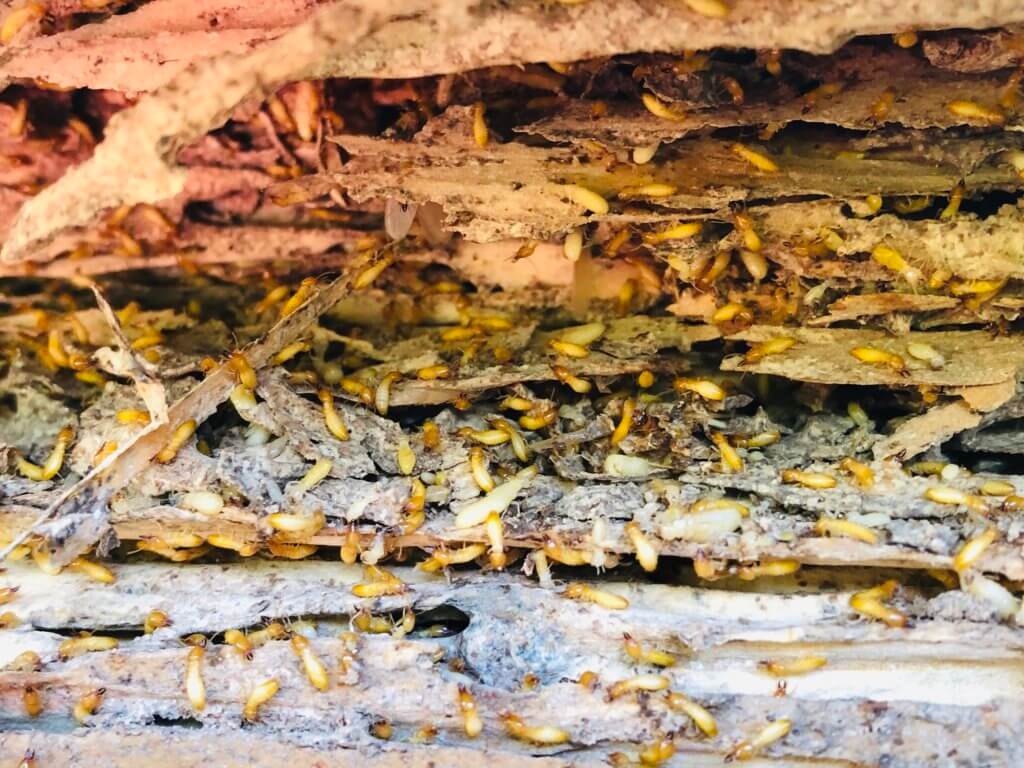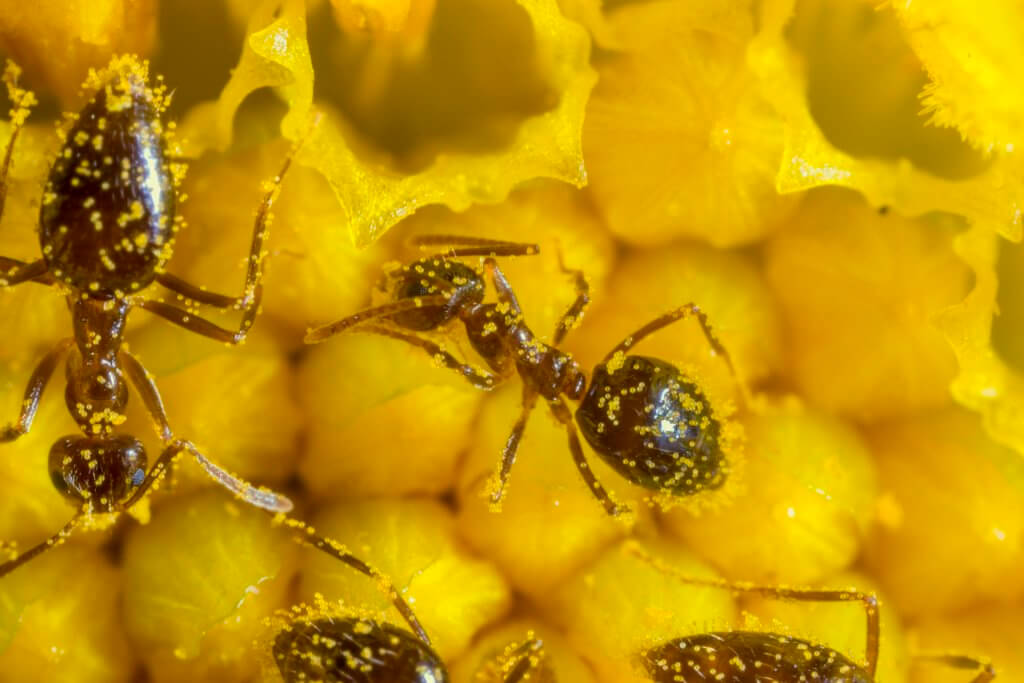Termites vs. carpenter ants… What do you have? Often, when we discuss various pest issues, that’s exactly the role that those creatures pose: simply pesky and disruptive presences. However, in some situations, these “pests” could be better characterized as a crisis waiting to happen.
That is the exact case when we discuss termites and carpenter ants. Both insects pose a severe danger to the health, value, and stability of any structure built with wood framing, which accounts for the vast majority of buildings in the US.
Despite this common threat, the two actually differ in a variety of categories and change the way in which the problem is treated. A wood-destroying insect infestation is not something that a hobbyist should be addressing. These are situations best handled by professional, local termite control technicians.
However, identifying the type of insect is something any Kansas City homeowner can pursue with just a base level of knowledge. Today we’ll discuss some of those factors so you can make a proper assessment of a potential pest issue facing your property.
Termites Vs. Carpenter Ants: Physiology

Despite sharing a common taste in their diets, ants and termites are fundamentally different insects. As such their physical makeup sets them apart from one another. First, termites have a two-section body shape, consisting of a head and thorax.
Their general shape flows from one section to the next with little deviation. Carpenter ants instead have a three-section structure to their body. Along with a head and thorax, ants have an abdomen section, showing two clear indentations from the other sections.
Both insects may also have wings, these are reproductive swarmers that emerge from existing nests to go find a suitable location for a new nest. Termite swarmer wings are typically longer than carpenter ants’ but without comparing the two it can be difficult to make that determination.
Termites vs Carpenter Ants: Behavior
This is one critical difference to understand between termites and carpenter ants. While both have the same target in your home, they have different goals. Termites eat wood. In truth, they can eat through most solid materials like stone and concrete to get to wood deposits that they consume to nurture their hive.
Carpenter ants do not eat wood. Instead, just as their name suggests, they choose to make their nests in wood deposits the same way other ants construct galleries in soil.
The result of this difference is in the pace and manner that the infestation takes place. Termites are renowned for their voracious appetites, They will quickly eat through deposits, constructing protective tunnels to shield them from any exteriors, and leaving behind droppings.
Carpenter ants will instead methodically work through the wood in your home, constructing their tunnels and galleries. Then they will likely venture into your home in search of food the same way other ants do.

Termites vs Carpenter Ants: Impact
This is one area in which both insects share much in common. Despite their variations in method and speed, they both pose a severe risk to any standing structure that has employed wood in its construction.
Collectively, they contribute to an amount of home damage every year that dwarfs many small industries. They can cause homes to become structurally unsound and may pose an issue if you ever choose to sell the property.
Termites Vs Carpenter ants: An Objective Comparison
| Termites | Carpenter Ants | |
|---|---|---|
| Physiology | Two-section body shape: head and thorax | Three-section body shape: head, thorax, abdomen |
| Wings | Longer wings on swarmers | Shorter wings on swarmers |
| Behavior | Eat wood, construct protective tunnels | Nest in wood, construct tunnels and galleries |
| Impact | Structurally unsound homes, extensive damage | Structurally unsound homes, extensive damage |
Both pests require the skills of professionally trained experts. At Gunter, we’ve been refining our expertise and approach to termite and carpenter ant treatments for decades. Our termite inspectors have over 60 years of combined termite experience, and many of our pest control experts have been inspecting and treating carpenter ant colonies for over 20 years each.
We understand the nuances and the potential risks of these types of infestations and how best to address them on a case-by-case basis. Reach out to us for any questions or concerns you have about pests in and around your home.
You can call us any time to take care of your insects and rodents. We will keep your family safe and pest-free. Our phone number is 816-444-2847.
FAQ
Q: What do carpenter ants eat?
A: Carpenter ants primarily feed on a variety of foods, including sugars, proteins, and fats. While they do not consume wood like termites, they may nest in wooden structures, particularly if they are damp or damaged. Carpenter ants commonly forage for sugary substances such as nectar, honeydew from aphids, and sweet foods found in kitchens and pantries. Additionally, they scavenge for protein-rich foods like insects, meat, and pet food scraps. Despite their name, carpenter ants do not eat wood but rather excavate it to create galleries and nesting sites. Proper sanitation and food storage can help deter carpenter ants from entering homes in search of food sources.
Q: Do carpenter ants eat wood?
A: No, carpenter ants do not eat wood as a food source in the same way termites do. Instead, they excavate wood to create nests and galleries for their colonies. While they do not consume wood for nutrition, their tunneling activity can cause structural damage to wooden buildings and structures over time.
Q: What attracts carpenter ants?
A: Carpenter ants are attracted to a variety of factors, primarily seeking food, water, and suitable nesting sites. They are particularly drawn to damp or damaged wood, as it provides an ideal environment for them to establish colonies. Additionally, carpenter ants are attracted to sugary substances, protein-rich foods, and fats. Crumbs, spills, and food debris left unattended can serve as food sources, attracting carpenter ants to homes and buildings. Addressing moisture issues, such as leaks or standing water, and properly storing food can help reduce factors that attract carpenter ants.
Q: Are carpenter ants dangerous?
A: While not harmful to humans directly, carpenter ants can cause structural damage to buildings by tunneling through wood. They’re primarily attracted to damp or damaged wood and can be a nuisance when seeking food indoors.
Be Sure To Check Out Some Of Our Services:
Termites — Mosquitoes — Spiders — Bed Bugs








